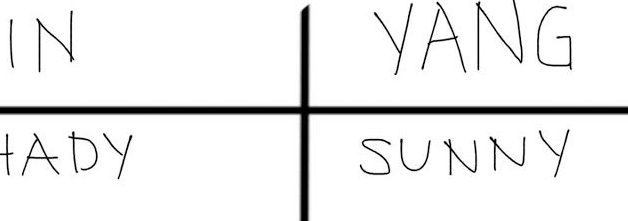The main idea that Chinese medicine is based on is not a strictly medical idea- it is a way of looking at the universe that you probably already have some familiarity with. In fact, if you lived through the late 90?s and early 00?s like me, you probably owned some item of clothing or jewelry with the basic tenet of Chinese medicine emblazoned on it:
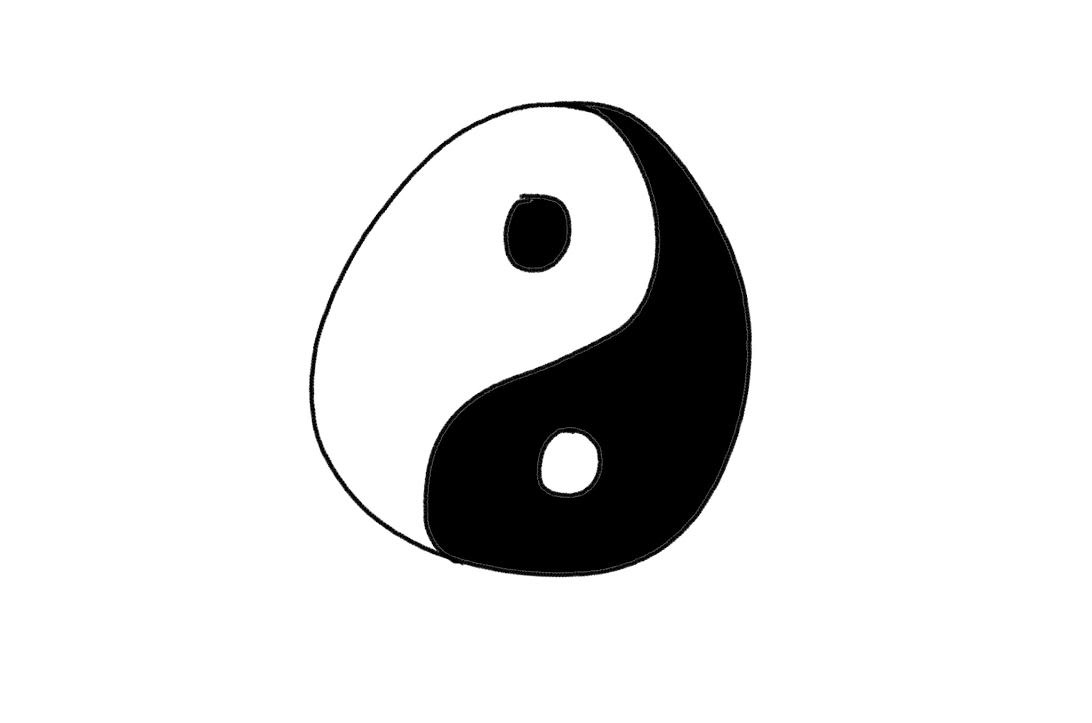
Recognize it? It?s the Yin-Yang symbol (side note: yang is pronounced with a long ?a? sound ? it rhymes with the word ?gong?), and we?ll come back to this drawing in a little bit. In order to make sense of it, we need to understand what exactly yin and yang are.
YIN AND YANG
Yin and yang are simply a way of comparing things. If you take any two things, one will be yin, and the other will be yang. How can you tell which is which? We can figure it out by understanding the nature of yin and the nature of yang. The literal translation of yin is ?the shady side of the hill,? while yang is translated as ?the sunny side of the hill.? These translations make clear the first thing we need to understand about yin and yang: they are opposites.
- YIN AND YANG OPPOSE EACH OTHER

Given that yang is light and yin is shade (or, lack of light), we can add ?dark? and ?light? to our list. Since yang is sunlight, we can also add ?day? to our list ? and the opposite of day is night, so this can be added to the yin side of our list.
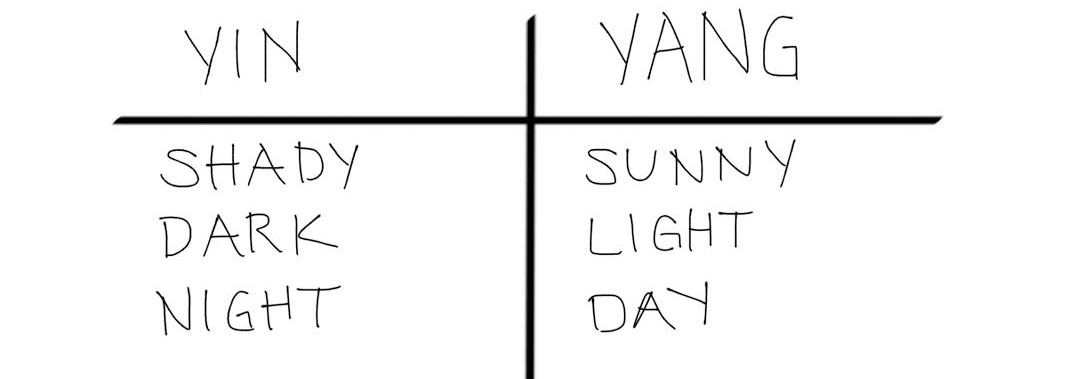
So far, light, day, and sun are on the yang side of our list. Some other examples of things that are considered yang include heat, summer, movement (e.g. running), awake, and masculinity. Their opposites (cold, winter, rest, sleep, and femininity) are considered yin.

If we analyze this list, we see that yin things tend to be dark, still, and about resting or nourishing, while yang things tend to be more about light, movement, and activity.
One thing to keep in mind with this list is that anything in the world can be broken down into smaller parts. Since yin and yang are comparisons, we can continue to identify the yin and yang aspects of those smaller parts. For example, let?s take the pair of ?night and day?. As we?ve established in our chart, day is yang, and night is yin. However, the idea of night can be broken down into different, smaller parts. For example, a cloudy night where the moon and stars are hidden is darker and more yin than a clear, moonlight night, which is brighter and more yang.
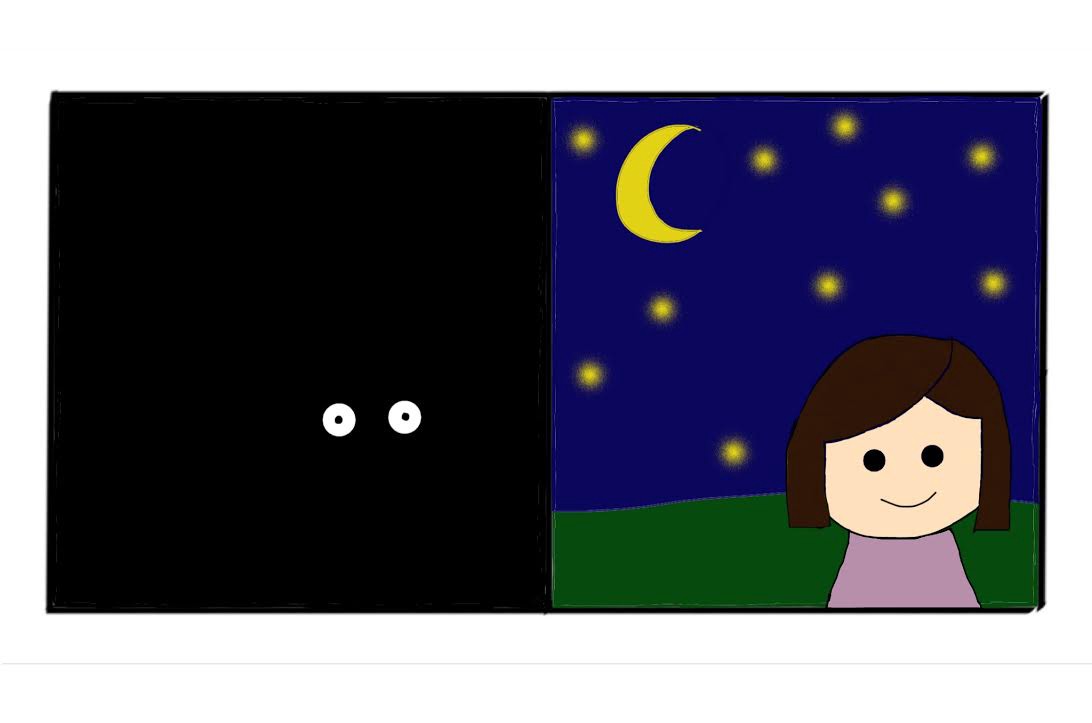
We could also break a single night into smaller parts ? for example, midnight is more yin than either dusk or dawn, which would be considered yang in this comparison.
2) YIN AND YANG DEPEND ON EACH OTHER
The second relationship between yin and yang is that yin and yang are interdependent. This relationship is also sometimes described as ?rooted in each other? ? in other words, you need yin to have yang, and yang to have yin. We can see this relationship easily with the pair ?movement (running) and rest.? If we are running we will eventually get tired and need to rest, so that we have energy to start running again. The yang activity is dependent on the yin activity. Similarly, we see that yin is dependent on yang: if we aren?t already moving, we can?t stop and rest.
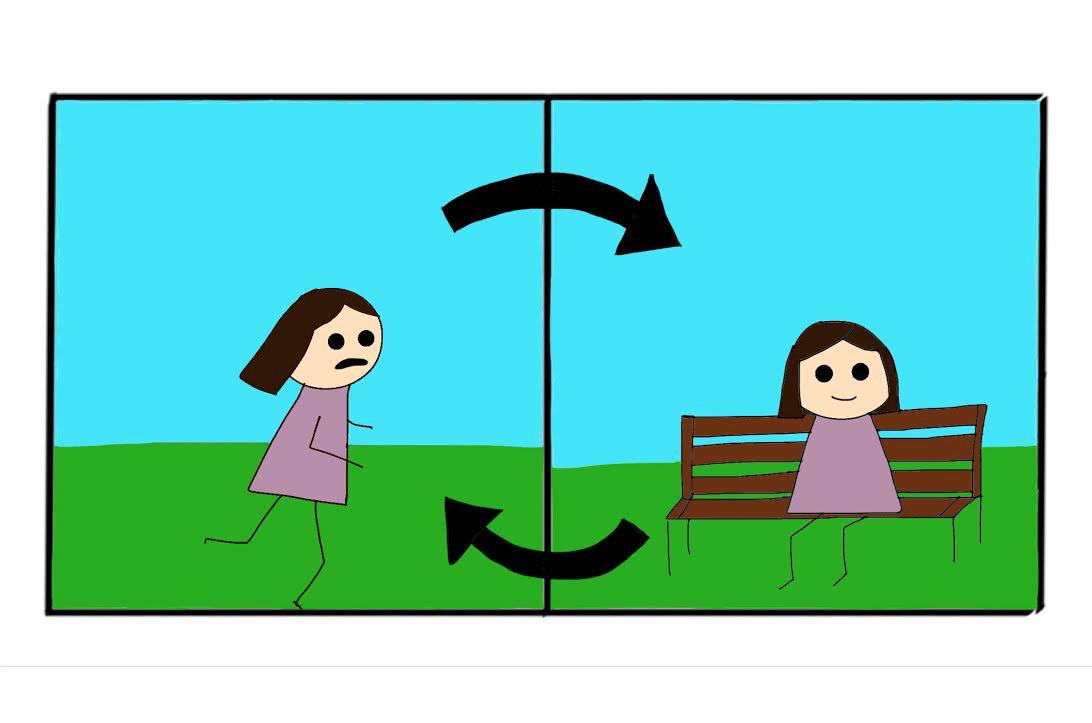
3) YIN AND YANG COUNTERBALANCE EACH OTHER
The third relationship between yin and yang is that they counterbalance each other.

In the drawing above, yin takes up 50% of the circle, and yang takes up the other 50%. However, if we adjust the circle so that yin takes up 70% of the circle, yang must counterbalance this change by taking up only 30% of the circle:
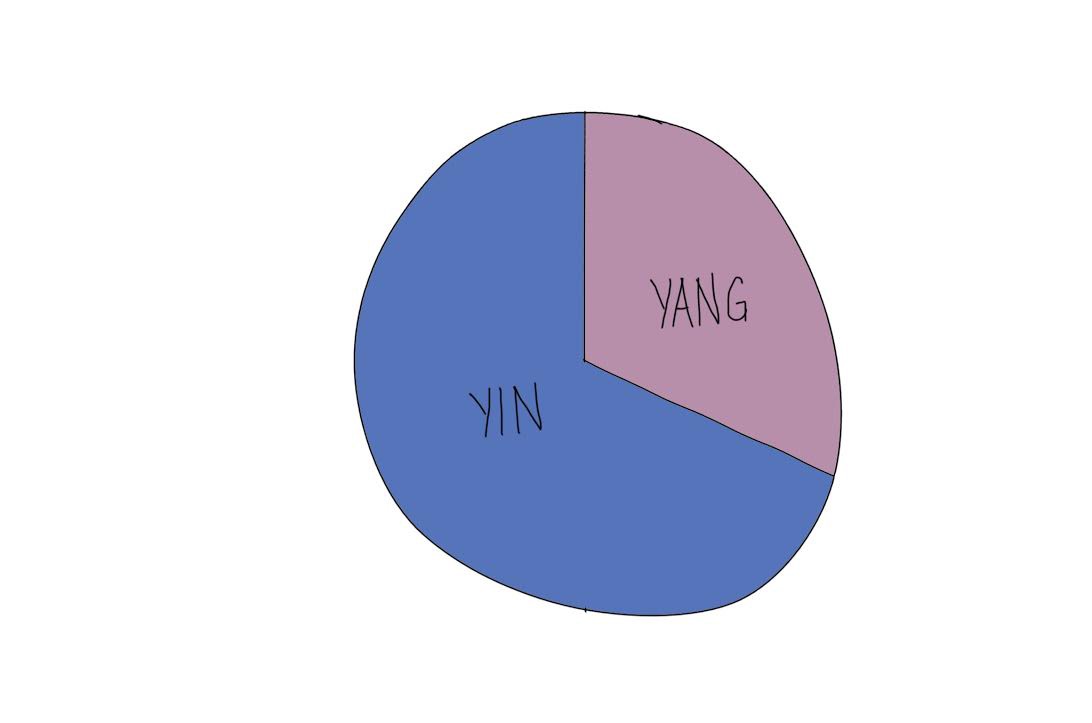
This illustrates the idea that yin and yang should balance each other. Ideally, the balance is 50?50, but if the balance is off, then one will have more than 50% while the other has less than 50%.
4) YIN AND YANG CAN TURN INTO EACH OTHER
The last relationship that we need to understand about yin and yang is that they can ?intertransform,? which is a fancy way of saying that anything that is yin can become yang, and anything that is yang can become yin.
For example, if we take a look at the example of ?asleep and awake,? we already know that asleep is yin and awake is yang. It isn?t possible to be only asleep or only awake for your whole life; we usually cycle between awake and asleep on a regular schedule, yang and yin transforming to keep up with our needs.
Another important aspect of yin and yang transforming into each other is that when one reaches its peak, it will transform into the other. Anyone who has pulled an all-nighter or two can attest to the fact that if we try to stay awake for too long, yang can quite suddenly transform into yin (hopefully not during the middle of an exam or important meeting).
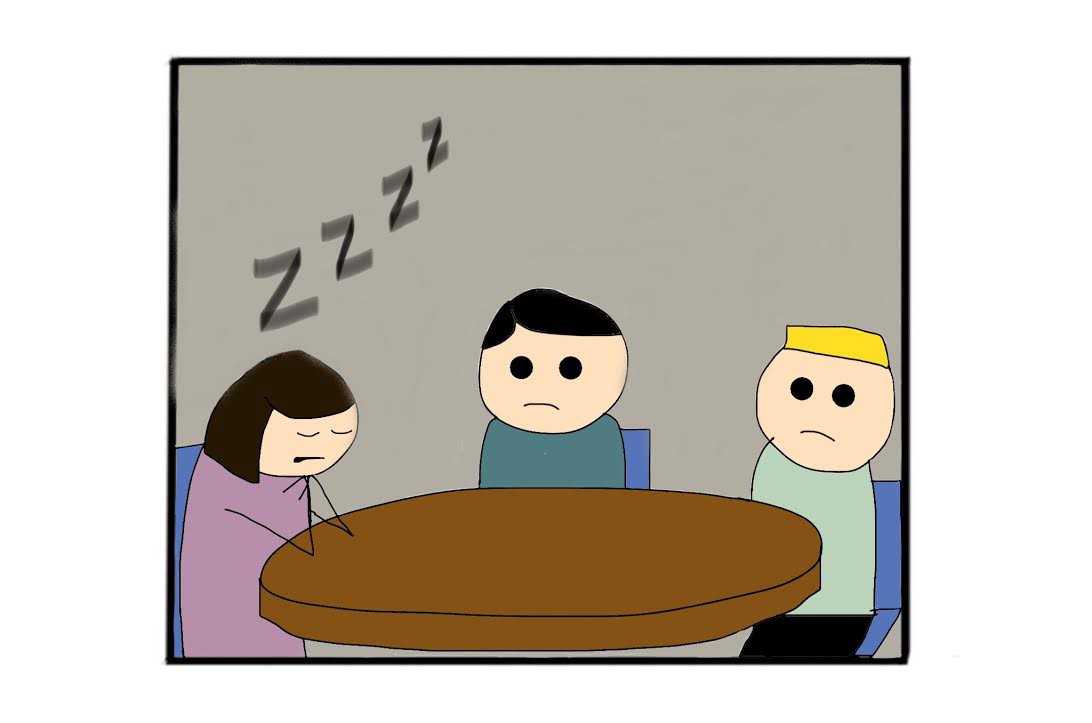
YIN YANG SYMBOL
So, now that you understand the concept of yin and yang, we can take a look at this symbol, and understand what it is saying:

The first relationship, opposition, is illustrated by the colors of the symbol- white and black are opposite colors. Each color takes up 50% of the circle, representing that yin and yang counterbalance each other. The black and white areas of the symbol are intertwined, showing that yin and yang are interdependent.
You can see that yin and yang can transform into each other in this area of the symbol:
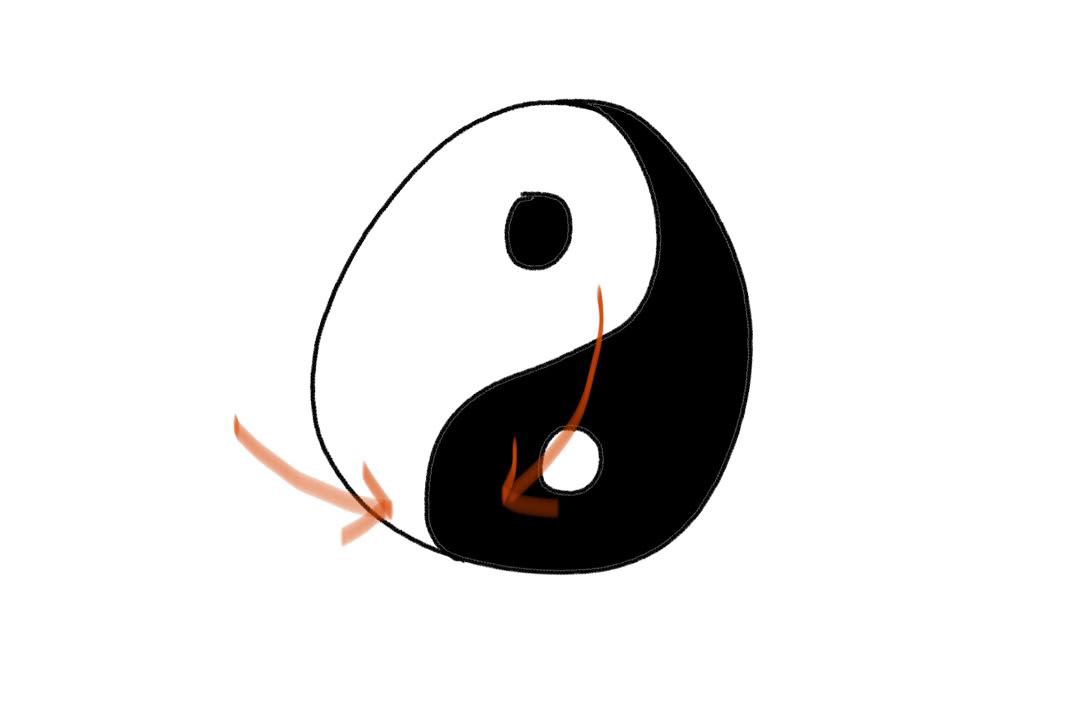
The black (yin) area of the symbol is at its thickest in this area. When yin it reaches its maximum, yang begins to emerge, as seen as the small sliver of white that eventually widens to become the most yang area of the symbol.
One other interesting thing about the yin yang symbol are these dots:
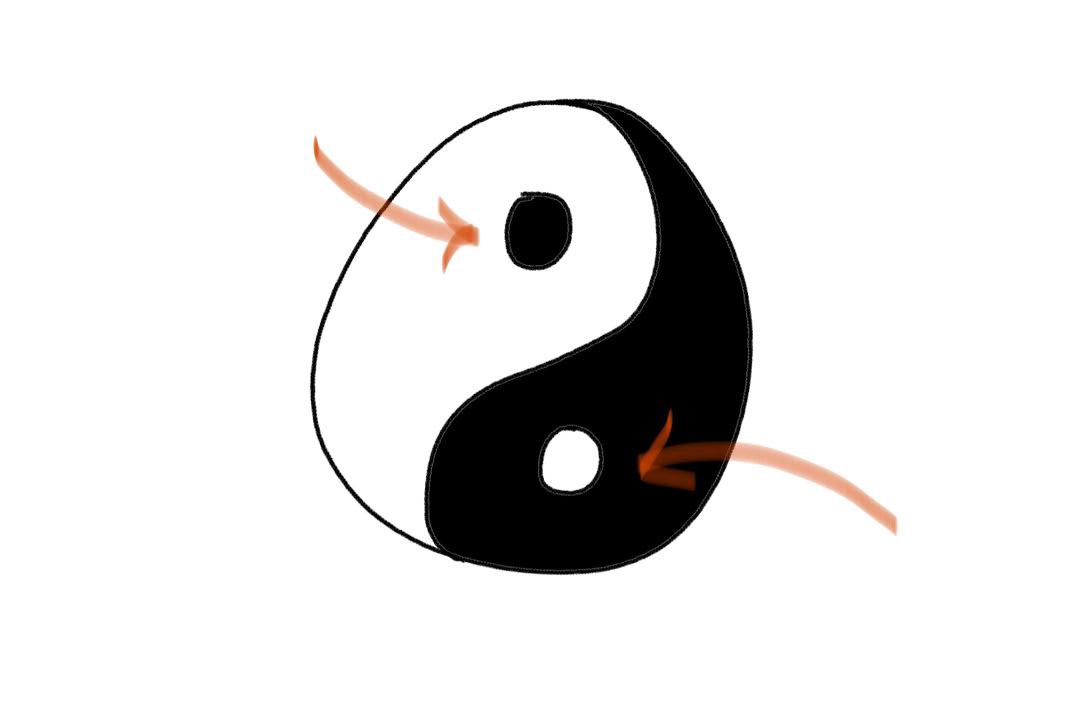
They illustrate the idea that there is never anything that is purely yin or purely yang- even the most yang part of the symbol contains some yin, and vice versa.
YIN AND YANG IN MEDICINE
So, now that you understand yin and yang, let?s take a look at how this concept applies to Chinese medicine and your body. Essentially, Chinese medicine sees health and disease as a balance of yin and yang. If the yin and yang of your body looks like this:

you are in good health. If it looks more like this?

?You are not doing so well. In fact, a person could have a 52%-48% disharmony of yin and yang and have some pretty serious signs and symptoms. The ultimate goal of Chinese medicine is to balance the yin and yang of your body to bring it back into balance.
Let?s take a look at some of the basic ways your yin and yang can be out of whack using some simple bar graphs. Below is a bar graph showing the yin and yang of a person in perfect health (each is at 50%):
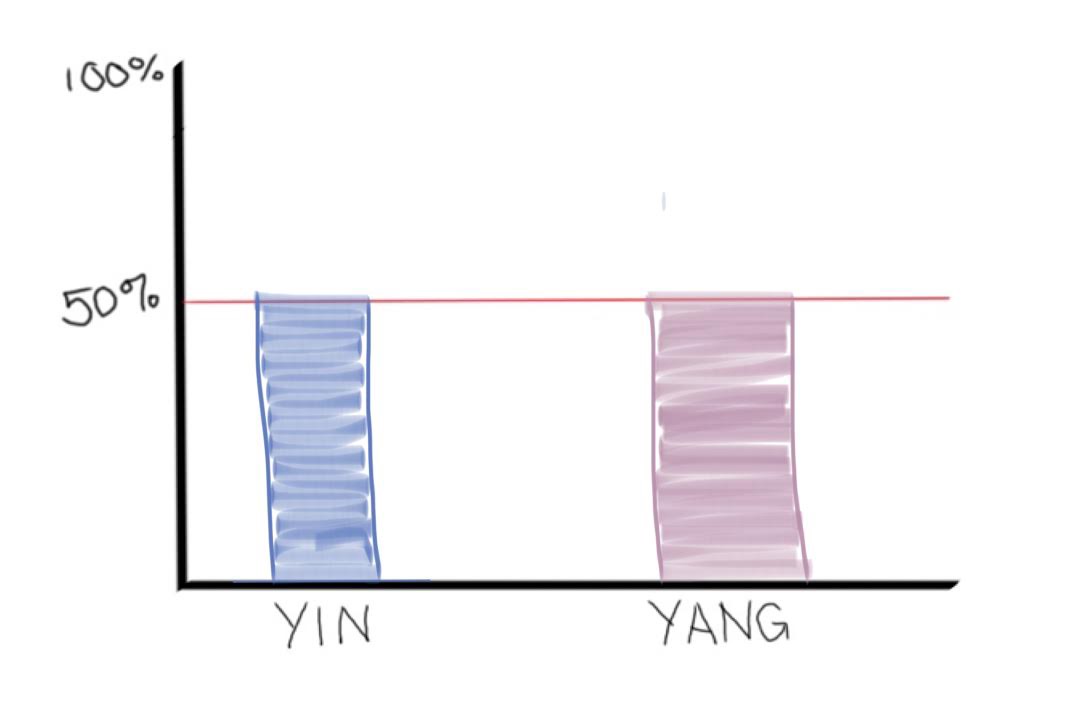
Now we?ll take a look at some graphs that show the basic ways that the body can be out of balance.
NOT ENOUGH YIN (OR NOT ENOUGH YANG)
In this situation, a person has a normal amount of yang, but does not have enough yin. In Chinese medicine, we would call this ?yin deficiency? or ?yin vacuity.?
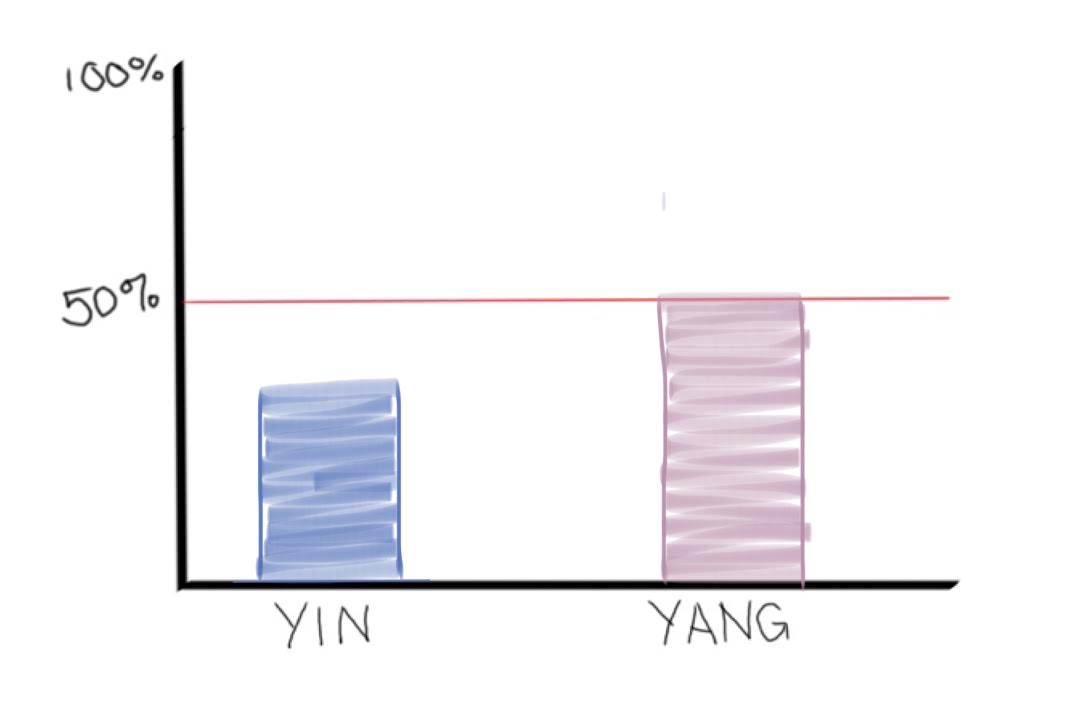
There could also be a situation where the person has a normal amount of yin, but not enough yang. This would be called ?yang deficiency? or ?yang vacuity.?
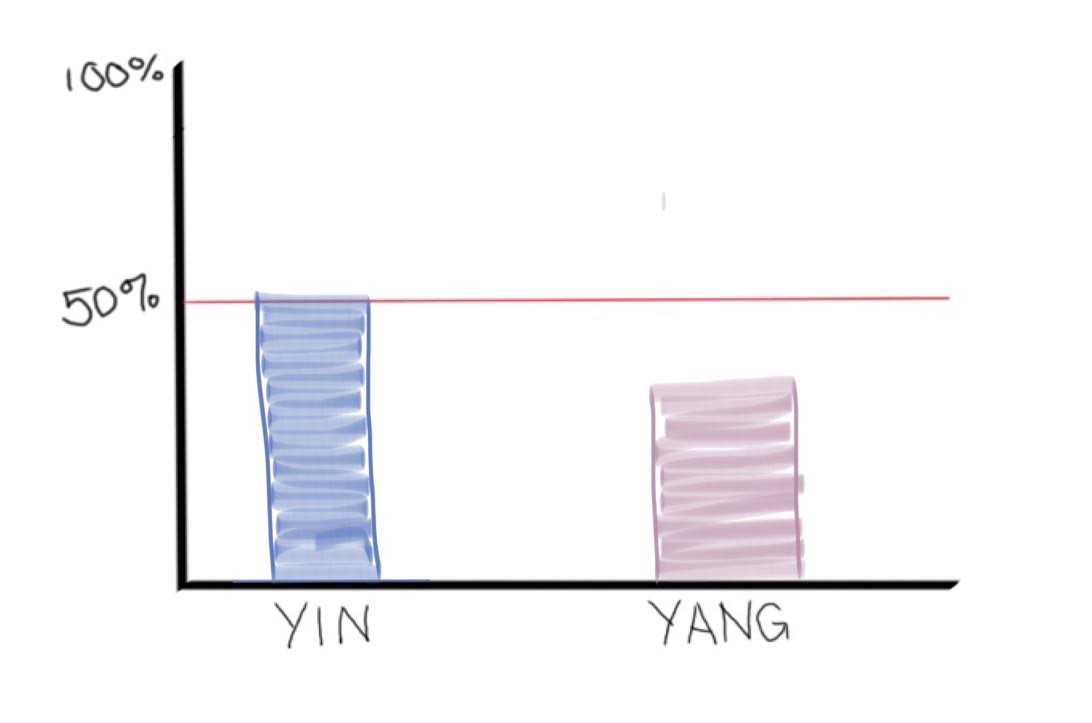
TOO MUCH YIN (OR TOO MUCH YANG)
If a person has a normal amount of yang, but too much yin, we would call it an ?excess? or ?repletion? of yin.
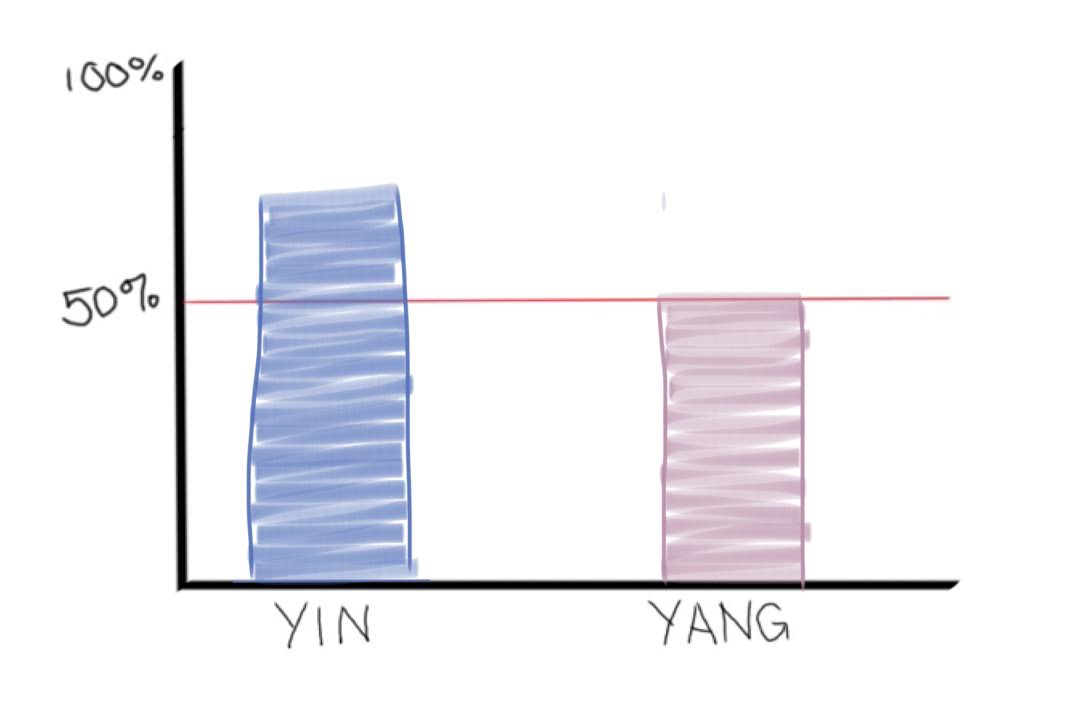
If someone has a normal amount of yin, but too much yang, this is called an ?excess? or ?repletion? of yang.
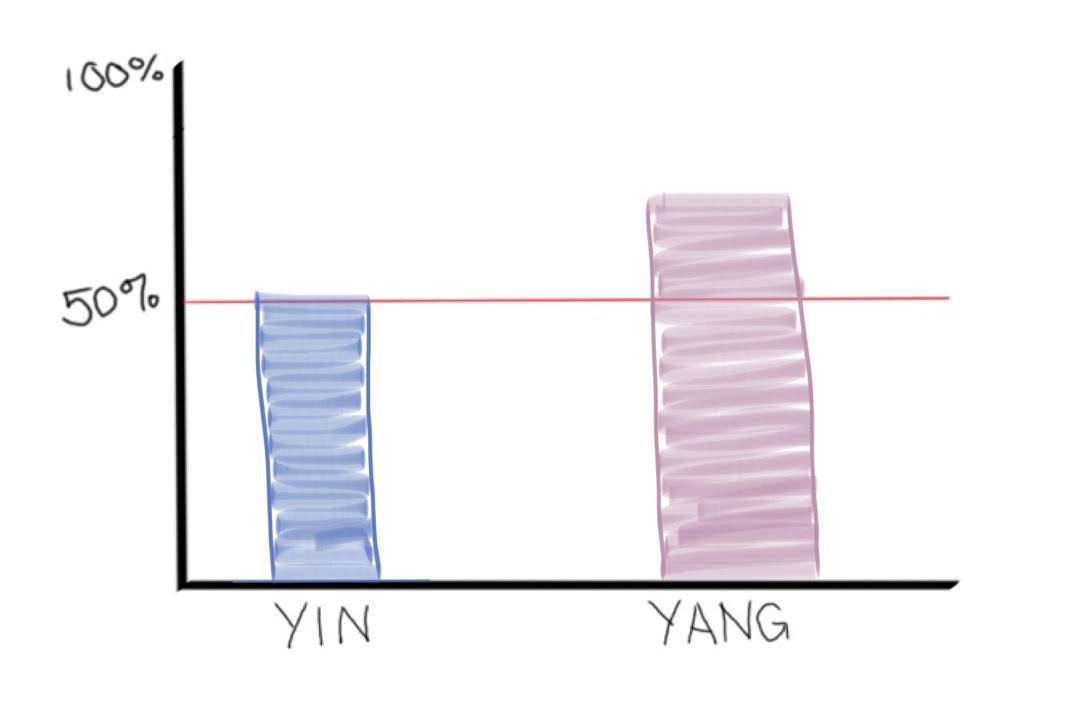
BOTH OUT OF BALANCE
Now, you may have noticed in the last couple of graphs that the total percentage of yin and yang did not add up to 100, and you also might remember that one of the key relationships between yin and yang is that they counterbalance each other. While it is possible to have a pattern of disease that looks like the graphs above, in reality it is much more likely to see patterns like this:

PRACTICAL APPLICATION OF YIN AND YANG
So, what does this actually mean in terms of a human body?
Let?s talk for a minute about chemistry. If you think back to high school, you may remember that one of the first things you discussed were the concepts of matter and energy. Everything in the universe is made up of matter and energy. Matter is anything that has mass and occupies space, while energy is the ability to change and do work.

In other words, matter and energy are yin and yang. When we talk about the balance of yin and yang in body, we are really talking about the balance between matter and energy. We are talking about metabolism and the maintenance of homeostasis.
In order to begin to understand how this looks in the body, both when the body is in balance and when it is in a state of disease, we need to understand one other basic theory that underlies Chinese medicine, which is called 5 Phases (or 5 Elements).
NOTE: This blog is meant for educational purposes only ? please don?t try to diagnose yourself using it! If you have a medical issue, please seek guidance and treatment from a licensed medical professional.
2016 Alli Urbanik Kimmel
